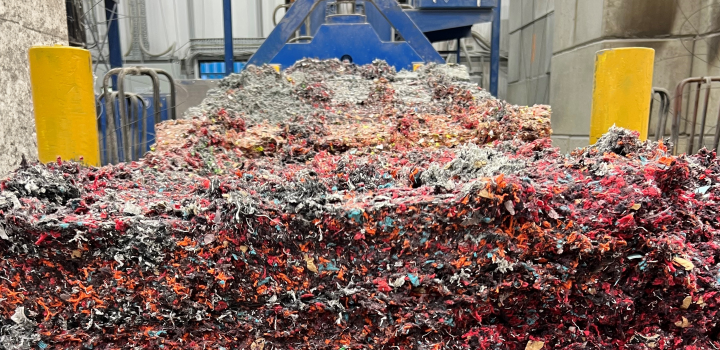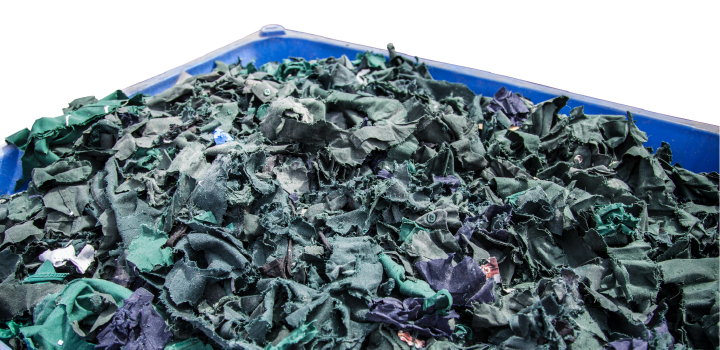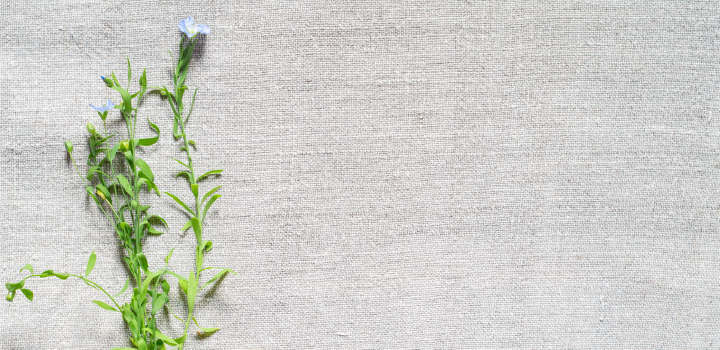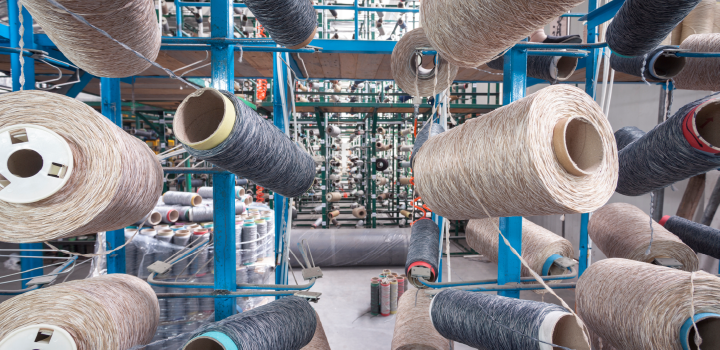Textile recycling in the UK
Every year, the UK sends 1,200,000 tonnes of textiles to landfill. Of that 1.2 million tonnes, approximately 350,000 tonnes are items of clothing. But why are so many clothes and textile items going to landfill?
To understand why such high volumes of textiles end up in landfill, we must look at the bigger picture of what happens at the end of a textile’s life.
Do textiles actually get recycled?
The short answer to the question of whether textiles actually get recycled is yes – where it is possible and economically viable to do so. However, textiles are made from all sorts of different fibres. This means textile recycling isn’t as straightforward as something like paper recycling. For instance, cotton fabrics are recycled in an entirely different way from textiles made from polyester. With blended textiles, for example, a poly-cotton blend, recycling is pretty much impossible. This is because there is no current economically viable way of separating the individual fibre types to generate an affordable end product.
If you have approached a company seeking a way to recycle or destroy your old textiles or uniforms, avoid using companies that try to spin a yarn (pardon the pun) when it comes to textile recycling. If you have been told that 100% of your textiles will be recycled into new garments, that probably isn’t true – unless you are only recycling materials made from one type of raw fibre.
What happens to clothes at textile recycling?
Textile recyclers receive clothes from all sorts of places. One source is charity shops. Charity shops receive a huge volume of clothes that aren’t suitable for donation. Donations could be unsuitable because of things like stains, damage or other forms of contamination. They then have to arrange recycling collections for those unsuitable textiles. Another source is public textile bins or clothing banks, where clothes deposited are usually sorted for recycling, sent to charities, or sent abroad.
Once textiles arrive at recycling facilities, they are sorted based on their material type. For example, cottons would be separated from wools and nylons. Once the clothes have been sorted, they are cleaned and processed into reusable fibres. The clothes are then typically shredded to make the fibres easier to spin into new yarns or fabrics. The recycled fibres can be used to create a variety of products depending on the quality of the fibres. Some may indeed be made into new garments. Others may go to rag recycling where they are used to make things like carpet underlay and dust cloths. Textiles that aren’t suitable for recycling will usually end up in landfill sites, exported overseas for reuse in poorer nations, or incinerated to create energy.
What happens when you need to shred textiles before recycling?
Many textiles require secure shredding before entering the sorting and recycling process. There are many reasons for this. For example, old uniforms may feature company logos, so the uniforms must be destroyed as soon as possible to protect the company from the risk of employee impersonation. Last season’s fashion garments and accessories may need to be destroyed to protect the integrity of a brand and avoid the risk of counterfeiting.
When we shred textiles, we will sort materials into fibre types where possible. We will usually send recyclable shredded textiles to rag recycling, and non-recyclable textiles to Energy from Waste where they are incinerated to generate energy for the National Grid. Nothing we shred has ever or will ever go to landfill.

Why is textile waste hard to recycle?
Textile waste is so hard to recycle because textiles are often made from a complex mix of materials. Because of this, there isn’t a ‘one size fits all’ recycling solution that works for all types of textiles.
For instance, when cotton is recycled, it is shredded into small pieces and then pulled apart into fibres. The fibres are then spun into new cotton yarns. However, when polyester (a plastic) is recycled, it is shredded into smaller fragments and then melted down and re-spun into new polyester. If you wanted to recycle cottons and polyesters in the same process, that simply wouldn’t work.
What fabrics cannot currently be recycled?
Unfortunately, many types of fabric cannot be recycled, and that could be partially why such a huge volume of textiles enter UK landfill sites each year. Some of the fabrics that aren’t currently recyclable include:
Blended textiles
As mentioned, blended textiles, which are made from a combination of different fibres, cannot be easily recycled. This is because the fibres in the blend have different chemical compositions and melting points, making it difficult to separate them during the recycling process.
While it may be possible to recycle blended textiles in the future with advancements in technology, for now, it is best to opt for pure textiles that can be recycled more easily.
Contaminated clothing
Another hurdle that the textile recycling industry faces is contaminants. For example, clothing stained with oil or chemicals may be unsuitable for recycling. The same goes for clothes that have been exposed to mould or mildew. This is because they pose a risk both to human health and the environment, potentially releasing harmful toxins during the recycling process. If they end up in landfill, they can also contaminate the soil and create a toxic runoff that pollutes local water sources. With contaminated clothing, incineration at Energy from Waste is therefore usually the best option.
Clothes with embellishments like sequins or beads
Embellished textiles, such as those with sequins, beads, or other decorative elements, are not usually recyclable due to the complexity of their composition. These embellishments can also be challenging to remove with machinery, and the manual process of removing thousands of sequins, for example, would be very expensive. The embellishments may also be made from materials that cannot be recycled.
The future of textile recycling in the UK
While these textiles aren’t currently recyclable, not all hope is lost. We are in an age where creating environmentally friendly alternatives to consumable products is essential to save resources and protect the environment. As a result, innovation is happening everywhere.
Shred Station has joined the UKFT on a £4 million project to revolutionise textile recycling in the UK. The project, called ACT UK, aims to create a model to sort and prepare non-re-wearable textiles for recycling in a new and scaleable way. Many other innovative projects are also happening across the globe, including a project that hopes to be able to separate blended textiles at scale. There are also many plant-based and eco-friendly alternatives to non-recyclable materials being created across the world.

What are some alternatives to non-recyclable textiles?
Unblended textiles
The best way to ensure your textiles can be recycled is if they are unblended, for example, 100% cotton or 100% polyester. As mentioned, as soon as textiles are blended, they become unsuitable for recycling into new garments.
Linen
Linen is made of fibres of the flax plant. Flax is a very resilient plant. When grown in appropriate conditions, it doesn’t require pesticides, fertilisers, or even huge amounts of water to thrive. In fact, according to the Alliance for European Flax-Linen & Hemp, a linen shirt requires just 6.4 litres of water to create. In comparison, a cotton shirt would require around 2,700 litres! Additionally, flax fibres are very strong, producing durable linen fabrics that are light, breathable, and can last for a long time.

Hemp
Hemp is another resilient and easy-to-grow plant that can be used to create strong and light fibres. Like flax, it is a natural pest-repellent so harsh chemicals aren’t required in fertilisation or treatment of the fibres. This makes hemp perfect for sensitive skin. Due to its versatility, hemp is used to make everything from clothing to rope, to car seat covers. Hemp is also totally biodegradable and absorbs more CO2 than it takes to cultivate. The unfortunate thing about hemp is that the plant it originates from is the cannabis sativa plant. Although it’s legal to grow hemp crops in the UK, there is a lot of red tape and expensive licenses required to grow it. For this reason, most of the UK’s hemp currently comes from overseas.
Other cellulose fibre made from sustainable sources
Cellulose fibres are taken from bark, wood or leaves of plants or other plant-based material. Hemp, for instance, is a cellulose fibre, as is cotton and linen. There are many plants that can be used to create cellulose fibres. This includes bamboo, eucalyptus, and even coconut water, which can all be used to make rayon fabric. Check your clothing labels or reach out to brands directly to find out more about their sustainability commitments.

Plant-based leathers
Thanks to innovations in the textile industry, we are now seeing plant-based leathers appearing across the globe! Some popular plant-based leathers include:
- Piñatex – a leather made from pineapple leaves.
- VEGEA – a grape leather created using byproducts from the production of wine. Tasty!
- Desserto – The Desserto brand has been able to create leather from the nopal cactus, also known as prickly pear. The company is already working with international brands such as Fossil, BMW and H&M to bring cactus-leather products to the market.
- AppleSkin™ – In 2004, an Italian inventor created apple leather almost by accident! Originally trying to develop a vegetable glue, Alberto Volcan instead created a sustainable plant-based leather that can be created from leftover pomace and peel from the fruit juice and compote industry. Since then, even more plant-based leathers have been created from lemon by-products (LemonSkin™), and Budweiser beer’s leftover grains (BarleySkin™).
- Mylo – a leather made from mycelium, the root-like system of mushrooms. This brand and other brands of mushroom leather are already being used by international brands such as Stella McCartney, Hermès, Gucci, Adidas, and many more.
Plant-based leathers are a fantastic alternative to animal leather. First of all, they do not contribute to the harmful effects of animal agriculture. The production of cow leather, for example, requires lots of resources and generates a significant amount of waste and pollution. Plant leathers do not. Additionally, plant-based leather is cruelty-free, making it a more ethical choice for consumers concerned about animal welfare.
Some weird, wonderful and innovative fabrics
While not widely available, there are many weird and wonderful innovations happening in the textile industry to create sustainable fabrics. Some examples include:
- Synthetic spider silk created using spider genes and microbes
- An absorbent fabric made from seaweed and algae
- A sustainable fabric produced from orange and citrus juice by-products.
As more money is invested into making the textile industry more sustainable, we can all hope to see textiles that are better for the environment, and textile recycling processes that reduce waste and enable items to be reused again and again.
If you have any textile shredding and recycling requirements, please feel free to get in touch with our team for a chat or a no-obligation quote.
Sign up for our newsletter to receive alerts about new blog articles, data protection advice, and Shred Station news.
